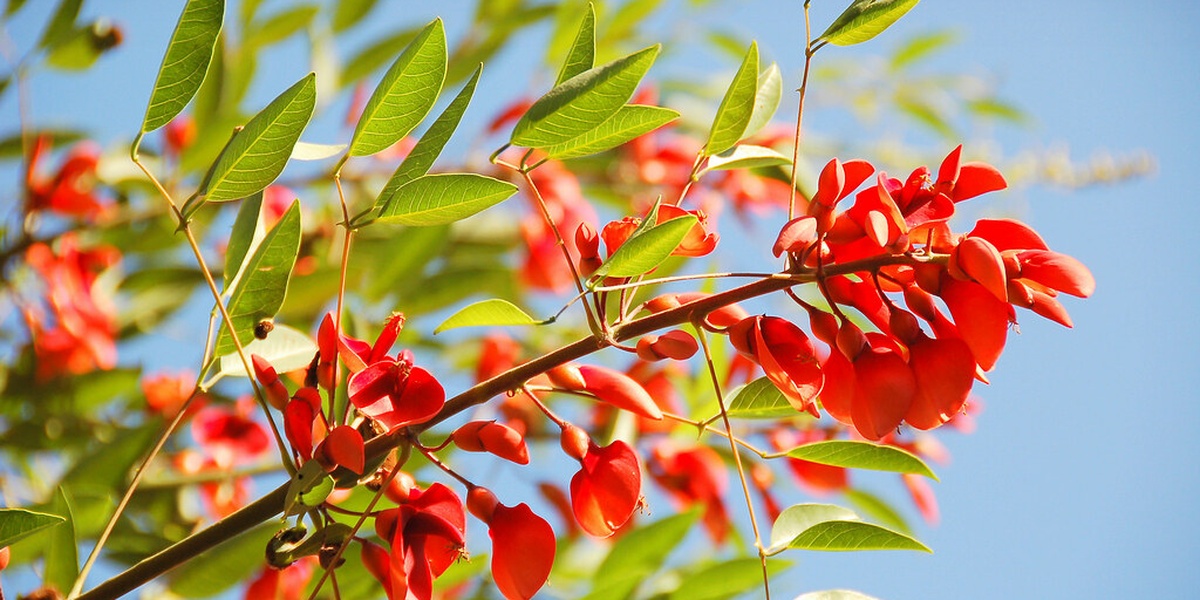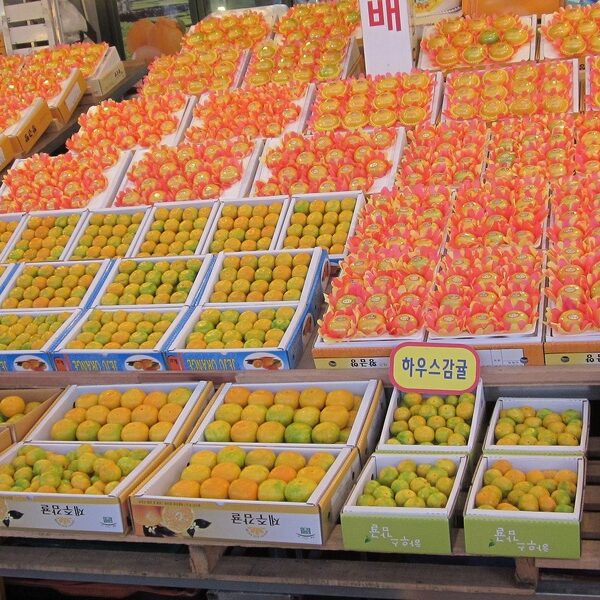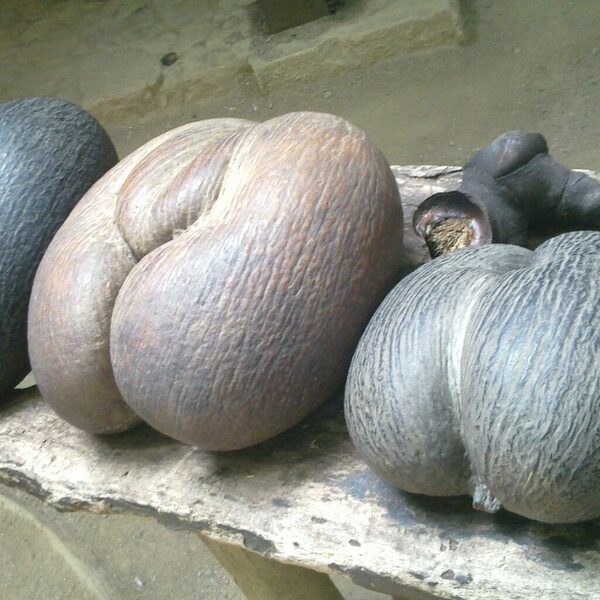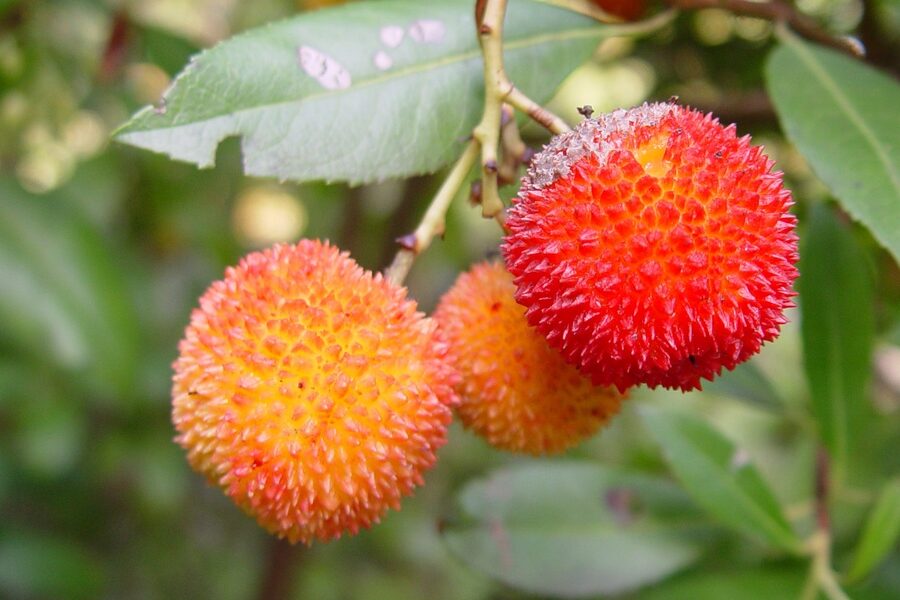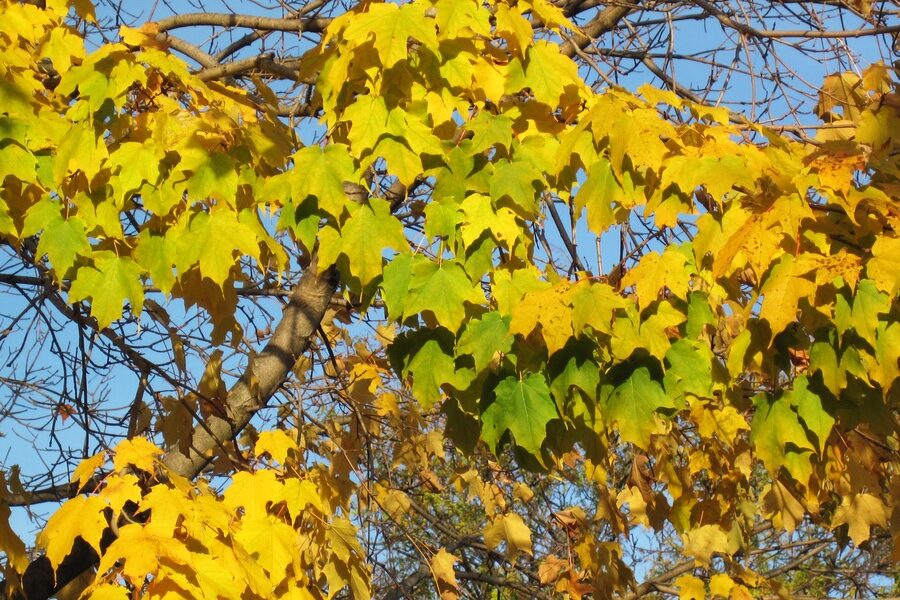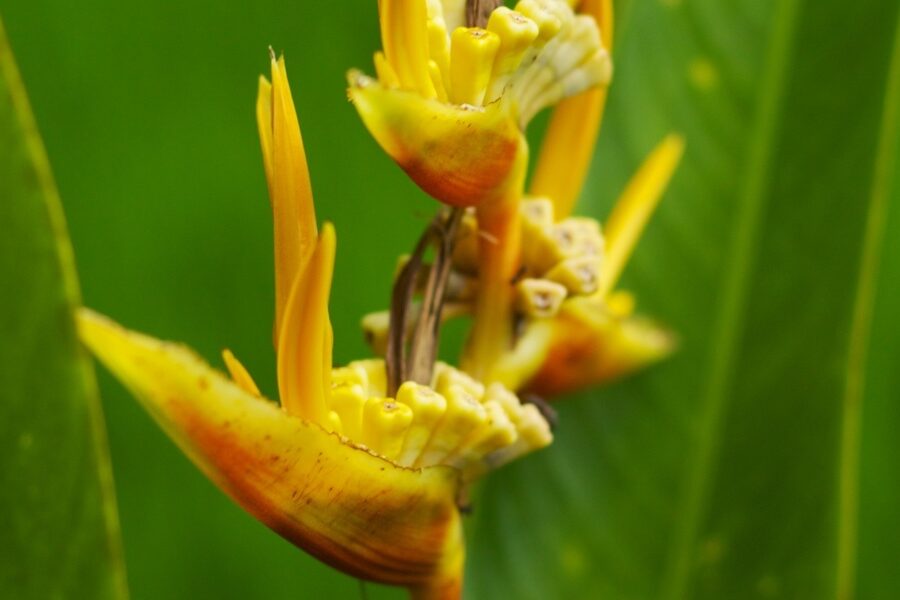Uruguay’s varied landscapes—from coastal dunes and wetlands to inland grasslands—support a distinctive mix of local flora. Walking these habitats reveals how plants shape ecosystems, local livelihoods, and seasonal rhythms across the country.
There are 38 Uruguay’s native plants, ranging from Arazá to Verbena. For each entry, data are organized with columns: Scientific name, Typical height (m), Habitat & Uruguay range, Conservation status, so you can compare form, where they occur, and any threats; you’ll find below.
How can I use the table to identify a plant in the field?
Start with habitat and typical height to narrow possibilities, then check the scientific name for reliable matches (common names vary). Use the Habitat & Uruguay range column to confirm whether a species is known from the area you’re in, and carry photos or a local field guide for visual ID.
Are any of these plants at risk and how is that indicated?
Yes—some species show concern; the Conservation status column flags threatened or protected taxa. If you find a rare plant, note its location, avoid disturbing it, and report sightings to local conservation groups or national biodiversity databases.
Uruguay’s Native Plants
| Name | Scientific name | Typical height (m) | Habitat & Uruguay range | Conservation status |
|---|---|---|---|---|
| Ceibo | Erythrina crista-galli | 5-10 | Riverine forests, wetlands, and lowlands throughout the country. | Not assessed |
| Arazá | Psidium cattleianum | 2-6 | Native forests (montes), especially in hilly and northern regions. | Not assessed |
| Coronilla | Scutia buxifolia | 2-5 | Native forests, particularly scrublands (monte de serranías) and riverine forests nationwide. | Not assessed |
| Guayabo del país | Acca sellowiana | 3-6 | Hilly regions (serranías) and native forests, mainly in the north and east. | Not assessed |
| Tala | Celtis ehrenbergiana | 4-10 | Native forests, especially riverine and parkland forests (monte parque) throughout Uruguay. | Not assessed |
| Ombú | Phytolacca dioica | 10-15 | Grasslands (pradera) and open spaces, historically widespread but now often solitary. | Not assessed |
| Palmera Pindó | Syagrus romanzoffiana | 10-20 | Riverine and gallery forests throughout Uruguay. | Not assessed |
| Palmera Butiá | Butia odorata | 3-7 | Sandy coastal plains and palm groves (palmares), mainly in the department of Rocha. | Vulnerable (VU) nationally |
| Sarandí colorado | Cephalantus glabratus | 2-4 | Riverbanks, wetlands, and floodplains throughout the country. | Not assessed |
| Sarandí blanco | Phyllanthus sellowianus | 1.5-3 | Riverbanks and wetlands, forming dense thickets (sarandizales) along waterways nationwide. | Not assessed |
| Chal-chal | Allophylus edulis | 4-8 | Native forests, especially along riverbanks and in ravines (quebradas) nationwide. | Not assessed |
| Molle rastrero | Schinus longifolius | 3-6 | Open woodlands, hillsides, and coastal scrub throughout the country. | Not assessed |
| Espinillo | Vachellia caven | 3-6 | Parkland savannas (monte parque), grasslands, and hillsides, widespread in Uruguay. | Not in danger of extinction |
| Plumerillo rojo | Calliandra tweediei | 1-3 | Riverbanks and open forests, mainly in the north and along the Uruguay River. | Not assessed |
| Ibirá Pitá | Peltophorum dubium | 15-25 | Riverine forests, particularly in the north of the country. | Not assessed |
| Tembetarí | Fagara hyemalis | 6-12 | Native forests, common in riverine and hillside environments nationwide. | Not assessed |
| Mburucuyá | Passiflora caerulea | 3-5 (vine) | Climbs on other plants in forests, scrublands, and altered areas throughout Uruguay. | Not assessed |
| Carqueja | Baccharis trimera | 0.5-1.5 | Grasslands, open fields, and rocky outcrops throughout the country. | Not assessed |
| Marcela | Achyrocline satureioides | 0.3-0.5 | Open fields, grasslands, and roadsides throughout the country. | Not assessed |
| Verbena | Glandularia platensis | 0.2-0.4 | Grasslands, roadsides, and open areas across Uruguay. | Not assessed |
| Flechilla | Stipa neesiana | 0.6-1.2 | Dominant grass in prairies (praderas) and open grasslands throughout Uruguay. | Not assessed |
| Palo de fierro | Myrceugenia glaucescens | 8-15 | Ravine forests (quebradas) in the eastern departments of Lavalleja and Maldonado. | Endangered (EN) nationally |
| Pitimba | Eugenia uniflora | 4-7 | Native forests, particularly along rivers and streams nationwide. | Not assessed |
| Lantana | Lantana camara | 1-2 | Scrublands, forest edges, and coastal areas, especially in the south and east. | Not assessed |
| Salvia azul | Salvia guaranitica | 1-1.5 | Forest edges, stream banks, and clearings, mainly in northern and eastern Uruguay. | Not assessed |
| Chirca de monte | Dodonaea viscosa | 2-4 | Hilly and coastal regions, common in scrublands (matorrales) and open forests. | Not assessed |
| Pasto de la perdiz | Stipa-brachychaeta | 0.5-1 | Grasslands and prairies across the country. | Not assessed |
| Palo de leche | Sebastiania brasiliensis | 5-12 | Riverine forests and humid environments throughout Uruguay. | Not assessed |
| Congorosa | Maytenus ilicifolia | 3-5 | Native forests, particularly in the south and east. | Not assessed |
| Envira | Daphnopsis racemosa | 3-6 | Humid, shady areas within native forests, especially in ravines (quebradas). | Not assessed |
| Sombra de toro | Jodina rhombifolia | 3-7 | Open woodlands (monte parque) and scrublands, widespread in Uruguay. | Not assessed |
| Arrayán | Blepharocalyx salicifolius | 6-10 | Riverine and gallery forests throughout the country. | Not assessed |
| Blanquillo | Sebastiana commersoniana | 8-15 | Common along riverbanks and in flood-prone areas nationwide. | Not assessed |
| Cactus de la sierra | Parodia ottonis | 0.05-0.15 | Rocky outcrops and sunny, well-drained hillsides, especially in the east. | Not assessed |
| Cortadera | Cortaderia selloana | 2-3 (plume height) | Wetlands, grasslands, and disturbed areas across the country. | Not assessed |
| Flor de nácar | Orthosantha-biflora | 0.4-0.8 | Grasslands and open woodlands, often in humid or rocky soils. | Not assessed |
| Peguajó | Thalia geniculata | 1.5-2.5 | Shallow waters of marshes, lagoons, and slow-moving streams. | Not assessed |
| Camalote | Eichhornia crassipes | 0.3-0.5 | Still or slow-moving freshwater bodies like lagoons and rivers nationwide. | Not assessed |
Images and Descriptions
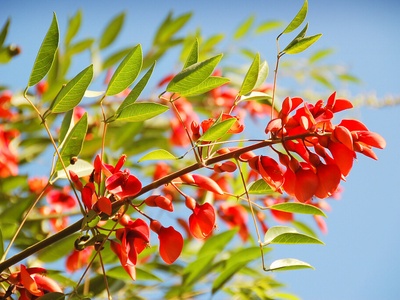
Ceibo
Uruguay’s national flower, this tree boasts spectacular, deep-red flowers shaped like a rooster’s crest. It thrives near water and its gnarled trunk and spiny branches add to its distinctive character.
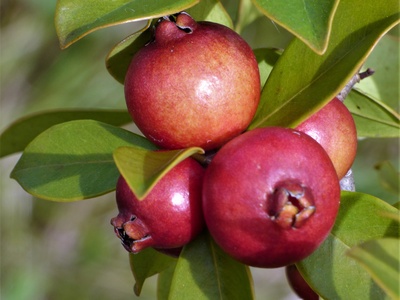
Arazá
A small tree or large shrub that produces delicious, tangy red or yellow fruits. Its glossy leaves and peeling bark make it an attractive plant, and its fruit is popular for juices and jams.
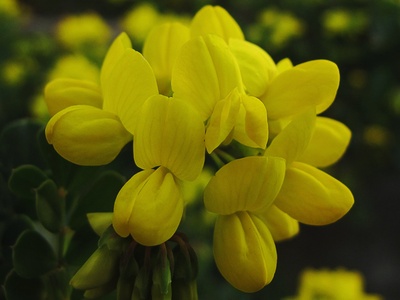
Coronilla
A very common, densely branched, thorny tree or shrub. Its formidable spines provide safe nesting sites for birds, making it a keystone species for local wildlife in the native forest ecosystem.
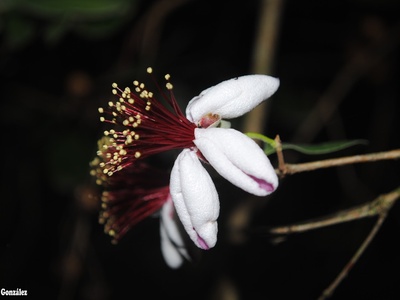
Guayabo del país
This small tree produces the feijoa or pineapple guava, a fruit with a unique aromatic flavor. It has beautiful flowers with bright red stamens and edible fleshy petals, attracting birds and humans alike.
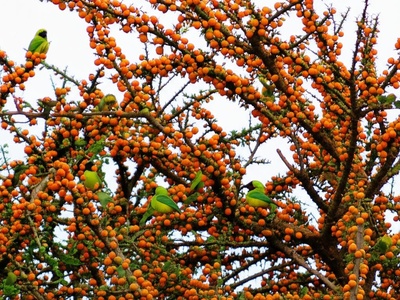
Tala
A tree with a distinctive zigzag branching pattern and small, sweet, edible orange fruits that attract birds. Its thorny branches often create impenetrable thickets, providing shelter for fauna.
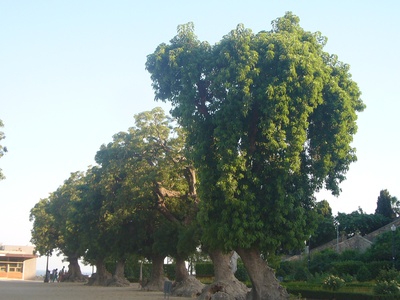
Ombú
An iconic symbol of the pampas, the Ombú is technically a giant herb, not a tree. Its massive, fire-resistant base and wide, shady canopy provided shelter for gauchos on the open plains.
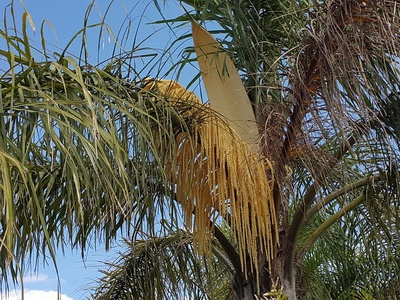
Palmera Pindó
The most widespread native palm in Uruguay, recognized by its smooth, ringed trunk and graceful, arching fronds. It produces clusters of small, sweet, fibrous orange fruits that are eaten by wildlife.
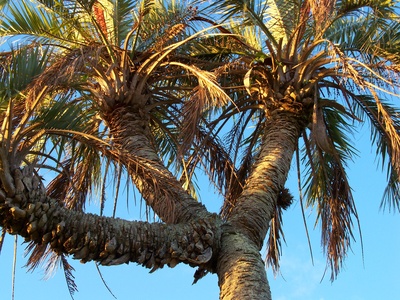
Palmera Butiá
An iconic palm of eastern Uruguay that forms vast, unique palm groves. Its sweet orange fruits (butiá) are used to make jellies and liquors, a key part of local culture and cuisine.
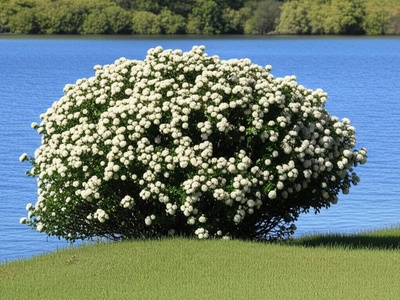
Sarandí colorado
A shrub or small tree found at the water’s edge. It is easily identified by its spherical clusters of fragrant, white, pincushion-like flowers that bloom in summer and are very attractive to pollinators.
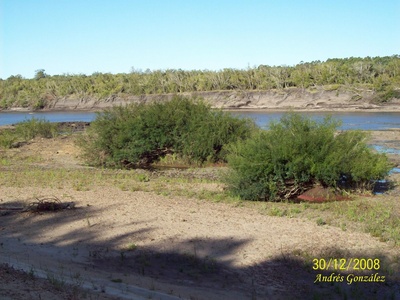
Sarandí blanco
A key wetland shrub that helps stabilize riverbanks. It has slender, willow-like branches and tiny, inconspicuous flowers. Its dense growth provides critical habitat for fish and other aquatic animals.
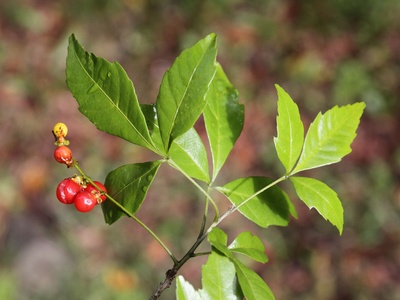
Chal-chal
A small tree whose clusters of small, red, translucent fruits are a favorite food for many bird species. It has characteristic compound leaves with three toothed leaflets.
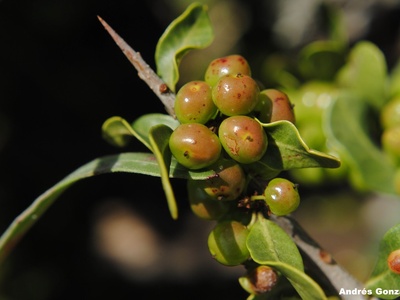
Molle rastrero
A drought-resistant shrub or small tree with a gnarled appearance and small, leathery leaves. When crushed, the leaves release a strong, resinous aroma. It produces clusters of small, purplish fruits.
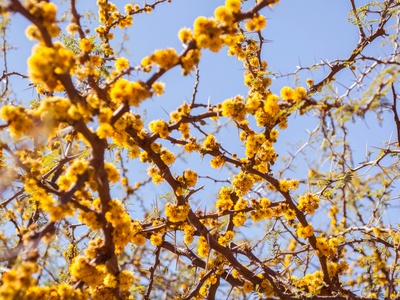
Espinillo
A small, thorny tree characteristic of open, sunny areas. In spring, it is covered in fragrant, yellow, ball-shaped flower clusters. Its hard wood is used for fence posts and firewood.
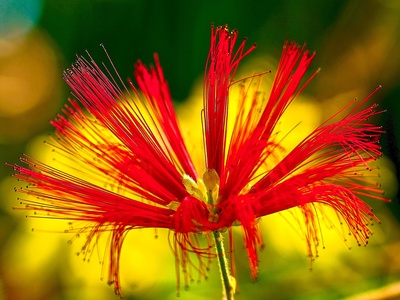
Plumerillo rojo
A stunning shrub known for its vibrant red, feathery flowers that resemble powder puffs. These unique blooms are a magnet for hummingbirds and butterflies, making it a garden favorite.
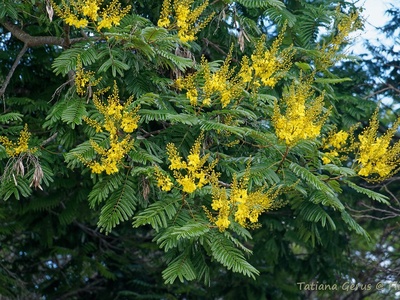
Ibirá Pitá
A large, majestic tree that produces spectacular cascades of bright yellow flowers in late summer. It provides excellent shade and its timber is highly valued, making it one of the giants of the native forest.
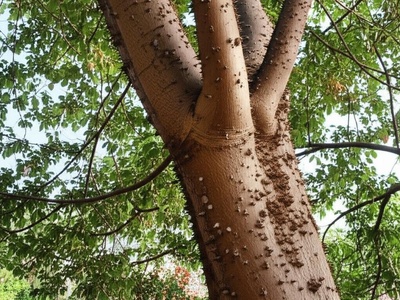
Tembetarí
Easily recognized by the large, conical, corky thorns that stud its trunk and branches. This unique armor protects the tree from herbivores. Its wood is light and its leaves have a citrusy scent.
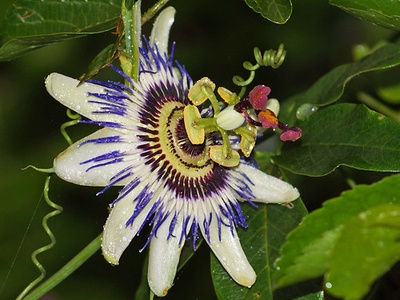
Mburucuyá
Uruguay’s native passionflower is a fast-growing vine with incredibly intricate, beautiful blue and white flowers. It produces an oval, orange fruit (mburucuyá) and is a host plant for several butterfly species.
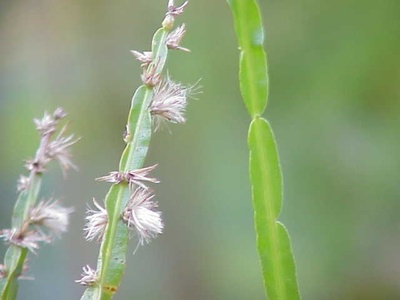
Carqueja
A unique leafless shrub with winged, green stems that perform photosynthesis. It is widely used in traditional medicine, especially as a bitter digestive tea. It has small, whitish flower heads.
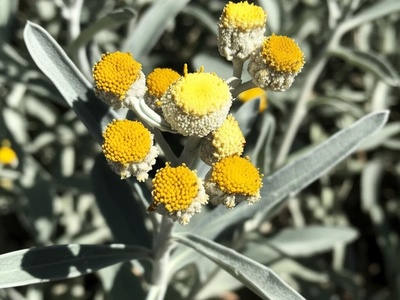
Marcela
A small, aromatic shrub with silvery-green leaves and clusters of small, yellowish-white flowers. It is one of Uruguay’s most popular medicinal herbs, traditionally used for digestive teas.
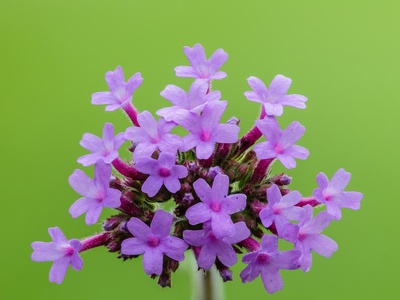
Verbena
A low-growing perennial that forms beautiful carpets of lilac or purple flowers from spring to autumn. It is a hardy native groundcover that is highly attractive to butterflies and other pollinators.
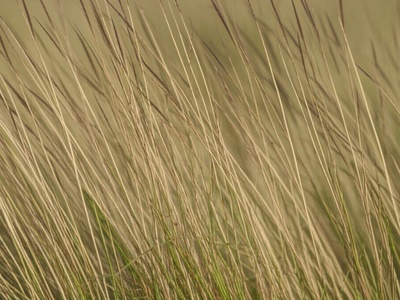
Flechilla
A common native bunchgrass of the Pampas region. It is recognized by its long, sharp-pointed seeds with a twisted awn that helps them drill into the soil. It is a key component of the native prairie.
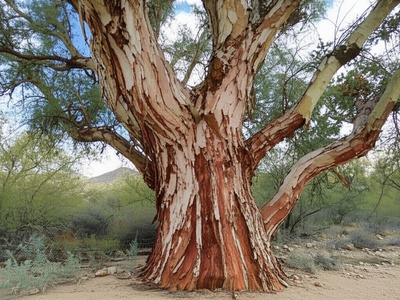
Palo de fierro
A rare and endangered tree with a very restricted range. It is known for its extremely hard, dense wood and smooth, light-colored bark that peels off in plates, revealing reddish tones underneath.
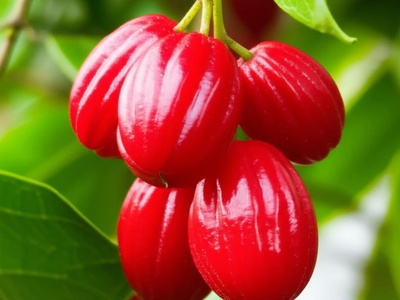
Pitimba
Also known as Pitanga or Ñangapiré, this shrub or small tree yields a juicy, red, ribbed fruit with a sweet-tart flavor. It’s popular for fresh eating and making preserves, and its new leaves are reddish.
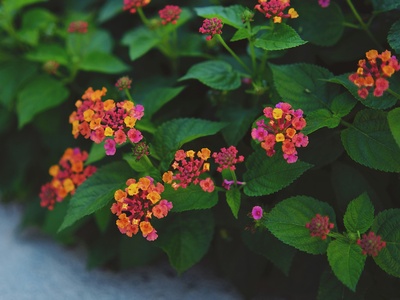
Lantana
A hardy, fast-growing shrub with rough-textured leaves and beautiful clusters of small flowers that often change color as they age, from yellow to orange or pink. It attracts a wide variety of butterflies.
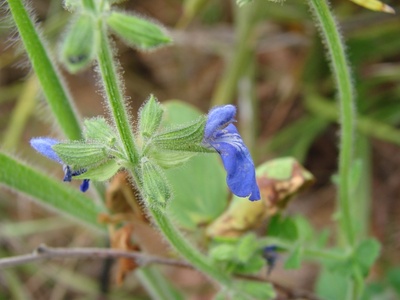
Salvia azul
A stunning native sage that produces tall spikes of deep indigo-blue, tubular flowers. It is a favorite of hummingbirds and blooms for many months, from spring through autumn.
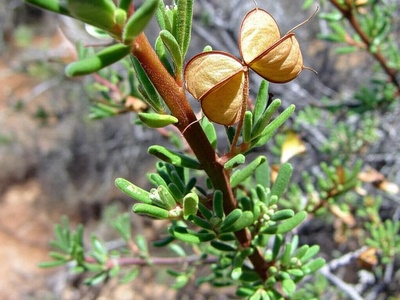
Chirca de monte
A resilient, evergreen shrub with resinous, sticky leaves that are well-adapted to dry conditions. It has inconspicuous flowers but produces interesting three-winged, papery seed capsules.
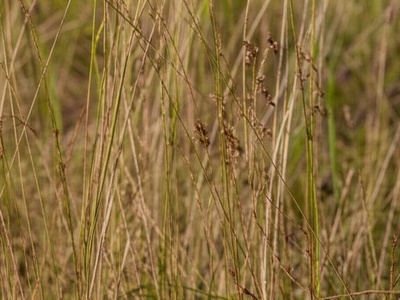
Pasto de la perdiz
A perennial bunchgrass that is a fundamental part of Uruguay’s natural pasture ecosystem. It provides forage for livestock and habitat for grassland birds like the tinamou (perdiz).
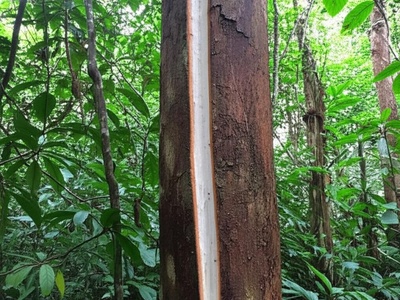
Palo de leche
A medium-sized tree named for the white, milky latex that exudes from its bark and leaves when cut. It has small, inconspicuous flowers and is a common component of the native forest understory.
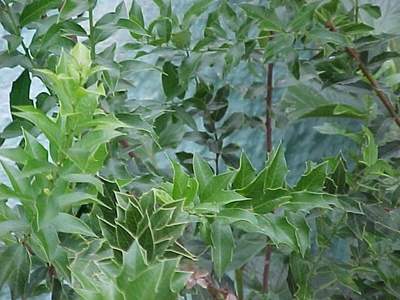
Congorosa
A shrub or small tree with leathery, spiny-edged leaves resembling holly. It is widely used in traditional medicine in South America, especially for stomach ailments. Its small fruits open to reveal red seeds.
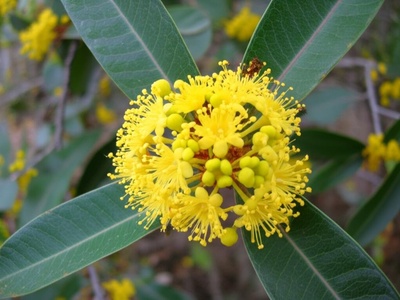
Envira
A shrub whose inner bark is composed of very strong fibers, traditionally used to make ropes and ties. It has clusters of small, yellowish, fragrant flowers and is toxic if ingested.
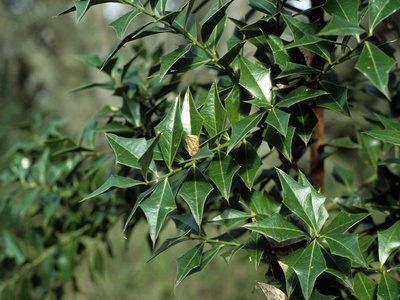
Sombra de toro
An evergreen small tree or shrub with unique, diamond-shaped (rhomboid), spiny leaves. Its common name, “bull’s shade,” reflects its use as a shade plant in open fields. It bears small, fleshy fruits.
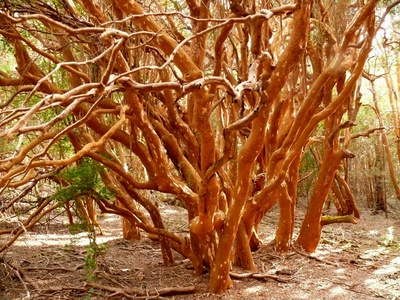
Arrayán
An elegant tree with a smooth, cinnamon-colored, peeling bark similar to that of the guava. Its leaves are aromatic when crushed, and it produces small, dark, edible berries.
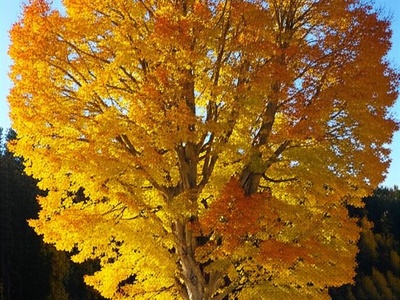
Blanquillo
A fast-growing tree that is one of the first to colonize new ground along rivers. It has light-colored bark and its leaves turn a vibrant yellow or red in autumn before falling, a rare trait among native trees.
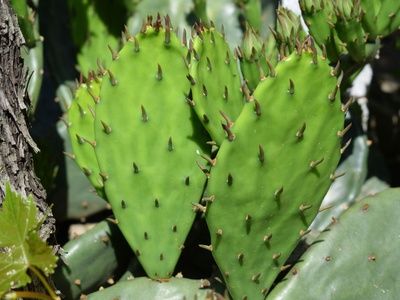
Cactus de la sierra
A small, globular cactus that often grows in clusters. It produces large, beautiful, bright yellow, funnel-shaped flowers in the spring and summer, adding a splash of color to rocky landscapes.
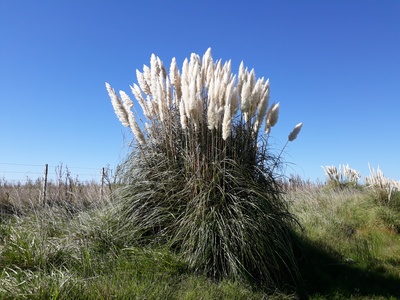
Cortadera
Also known as Pampas Grass, this large, tussock-forming grass is a dramatic feature of the landscape. It is famous for its tall, silvery-white, feathery flower plumes that appear in late summer.
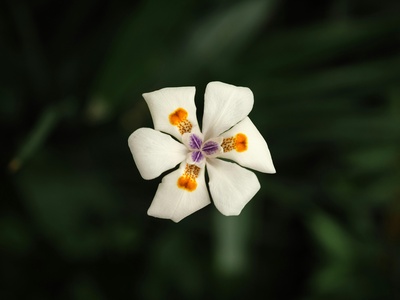
Flor de nácar
A native iris relative with grass-like leaves and delicate, beautiful flowers. Each flower has three large white outer petals and three smaller, purplish inner petals, and lasts for only a single day.
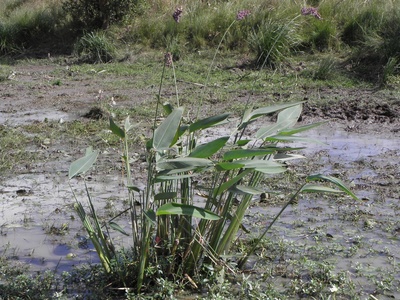
Peguajó
An aquatic plant with large, canna-like leaves on long stalks that rise above the water. It produces delicate, purple flowers on a distinctive, zigzagging stem, creating a striking architectural look in wetlands.
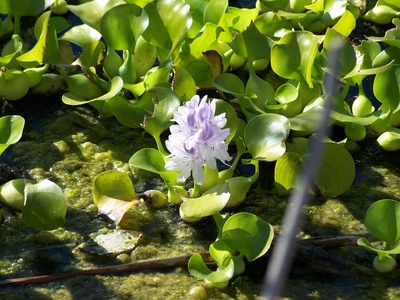
Camalote
The native water hyacinth is a free-floating aquatic plant with shiny, rounded leaves and beautiful lavender flowers. While native, its rapid growth can cover water surfaces, impacting waterways.
